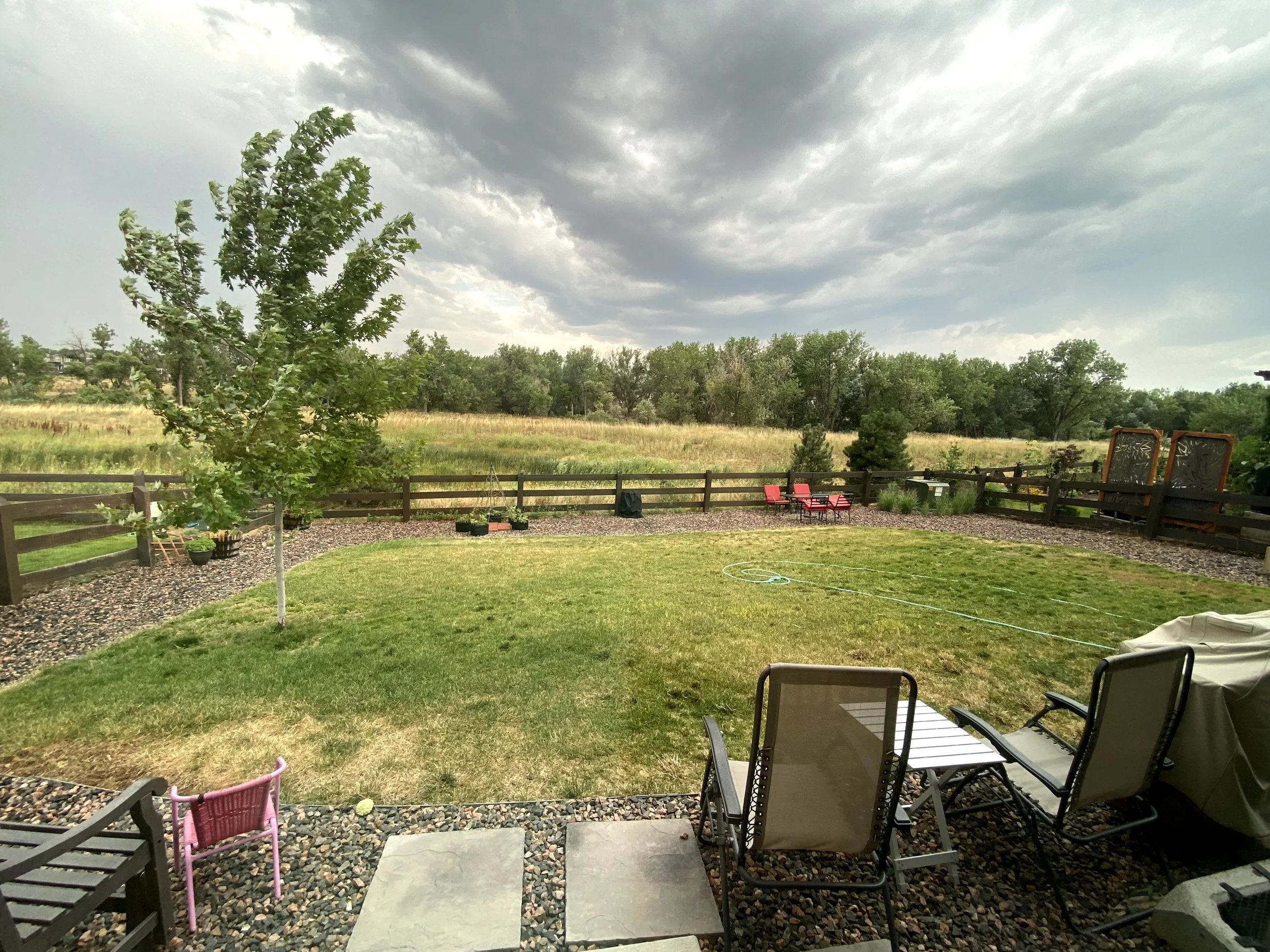Backyard Biodiversity Project, Part 1: Tearing out the Turf Grass
Grass and gravel: Amy’s backyard before the biodiversity makeover.
When my husband and I bought our house in Lafayette, the backyard was barren and sterile. There was a ring of gravel around a sloped, south-facing turf grass lawn and one lonely tree. We love being outside and our backyard backs up to the Coal Creek Trail, but the lack of patio, deck, or flat space made it hard to eat or relax there, and the lack of landscaping made it not feel very welcoming. We knew we wanted to make it more beautiful and more usable.
“So much for the promise of landscape fabric.”
Even though it wasn’t what we wanted, it still required a fair bit of maintenance: watering and mowing and a lot of work on hands and knees to remove weeds in the lawn and on the rock - so much for the promises of landscape fabric!
I was initially interested in gardening with native plants because I knew they would be adapted to grow well in the soils and climate we have in Colorado, and they wouldn’t need much water to look their best. But while reading up about native plants, I learned how critical native plants are to native bees that often only collect pollen from the one species, genus, or plant family with which they co-evolved. I was ready to think about my backyard’s look in terms of plants, but I was shocked by the diversity and beauty of the bees themselves – red-striped ones, all-green ones, ones with an iridescent shine. These were the very native bee species that were struggling so mightily with habitat loss.
Then I read Bringing Nature Home by Doug Tallamy, and I learned that most caterpillars can only eat a specific genus of native plants – and there are some “keystone” genera that support many of different caterpillars. Caterpillars obviously become a panoply of butterflies and moths, but I learned that they are also hugely important to bird parents who need to feed hundreds of caterpillars per day to their hungry baby birds. In the book, Tallamy (an ecology researcher) points out how areas rich with native plants tend to have more caterpillars, and therefore they attract and support a more diverse variety of birds. In addition to providing this food source, native plants provide the nesting sites, nest materials, and shelter that birds need. In short, native plants are the building blocks of thriving ecosystems.
With this information, my vision started to coalesce around gardens full of Colorado/High Plains native plants that would hum with activity and support the local food web. Because backyards aren’t just one thing, I also wanted space to grow crops with my children and have a great spot to relax and eat outside. My husband was primarily interested in the yard being low maintenance and being a pleasant, good-looking space. My children wanted space to run barefoot, something to climb, and lots of little nooks to play in. We all wanted to preserve the views of the open space.
The next step was making a plan that would take all of these goals into account.
Part 2: Coming soon

